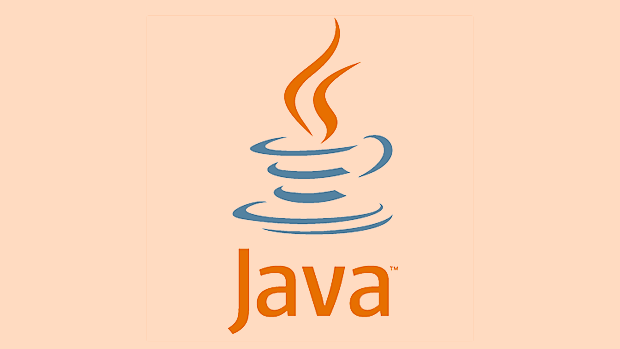ConcurrentHashMap performs better than HashMap in multi-threaded environments due to built-in concurrency support. 1. HashMap is not thread-safe and requires external synchronization, leading to overhead. 2. ConcurrentHashMap uses segment locking (Java 7 and earlier) or synchronized bins and CAS operations (Java 8 ) to allow concurrent access without full map locking. 3. Read operations in ConcurrentHashMap are non-blocking and faster. 4. Iterators are weakly consistent, avoiding ConcurrentModificationException but may miss recent updates. 5. Bulk operations like putAll() or clear() aren't atomic, requiring external synchronization for full consistency. 6. ConcurrentHashMap uses more memory due to internal concurrency structures. 7. Use HashMap in single-threaded contexts for simplicity and speed. 8. Use ConcurrentHashMap when multiple threads read and write concurrently or when safe bulk operations and iterators are needed.

When you're working with Java and dealing with maps in a multi-threaded environment, choosing between HashMap and ConcurrentHashMap can have a noticeable impact on performance. If your application involves multiple threads reading and writing to a map, the choice becomes even more important. Let’s break down how these two compare when it comes to performance under different scenarios.

Thread Safety Without Overhead
The biggest difference between HashMap and ConcurrentHashMap is thread safety. HashMap isn't thread-safe at all — if multiple threads modify it concurrently, you could end up with corrupted data. You'd need to manually synchronize it, which adds overhead.

On the other hand, ConcurrentHashMap was built for concurrent access. It doesn’t lock the entire map when one thread is modifying it. Instead, it uses a technique called segment locking (in Java 7 and earlier) or synchronized bins and CAS operations (starting from Java 8), allowing multiple threads to operate on different parts of the map simultaneously.
So, if you're working in a single-threaded context, HashMap will outperform ConcurrentHashMap because there's no extra synchronization overhead. But as soon as concurrency comes into play, ConcurrentHashMap starts to shine.

Performance Under High Concurrency
Under heavy concurrent writes, ConcurrentHashMap definitely has an edge. Since it allows concurrent modifications by locking only part of the map (or using atomic operations), it scales better than a synchronized HashMap.
For example:
- When 10 threads are inserting entries into a map, a synchronized
HashMapwould block all but one thread at a time. - Meanwhile,
ConcurrentHashMapmight allow several threads to insert simultaneously without contention.
This behavior makes ConcurrentHashMap ideal for high-concurrency applications like web servers or caching systems where many threads may be reading or writing at once.
Some key points to note:
- Read operations in
ConcurrentHashMapgenerally don’t block, so they’re fast. - Iterators returned by
ConcurrentHashMapare weakly consistent, meaning they won’t throwConcurrentModificationException, but they may not reflect the most recent changes. - Bulk operations like
putAll()orclear()aren’t atomic, so if you need full consistency during such operations, you’ll need external synchronization.
Memory Usage and Internal Overhead
It's also worth mentioning that ConcurrentHashMap tends to use more memory than a regular HashMap. That’s because of additional internal structures used for concurrency control — like locks or volatile fields.
If memory usage is a concern and your app doesn’t require concurrent access, then sticking with HashMap makes sense. However, in environments where both performance and thread safety matter, the trade-off in memory is usually acceptable.
Also, keep in mind that resizing a ConcurrentHashMap under high concurrency can get complex. Java 8 improved this by using tree bins and better resizing strategies, but it still carries some overhead compared to a simple resize in HashMap.
Use Cases and Recommendations
Choosing between the two really depends on your use case:
Use HashMap when:
- You're working in a single-threaded context
- You need maximum performance and minimal overhead
- You're okay with synchronizing externally if needed
Use ConcurrentHashMap when:
- Multiple threads will read and write concurrently
- You want to avoid manual synchronization
- You need safe and efficient bulk operations or iterators
A common mistake is assuming that wrapping a HashMap with Collections.synchronizedMap() gives you the same performance as ConcurrentHashMap. In reality, synchronized maps can become bottlenecks under load because they lock the whole structure.
In short, if your app needs to handle concurrent access safely and efficiently, ConcurrentHashMap is the way to go. Otherwise, stick with HashMap for simplicity and speed. The difference boils down to whether you need concurrency built-in or not — and it's not worth overengineering unless you actually see contention or thread-safety issues in practice.
The above is the detailed content of Comparing Java HashMap and ConcurrentHashMap Performance. For more information, please follow other related articles on the PHP Chinese website!

Hot AI Tools

Undress AI Tool
Undress images for free

Undresser.AI Undress
AI-powered app for creating realistic nude photos

AI Clothes Remover
Online AI tool for removing clothes from photos.

Clothoff.io
AI clothes remover

Video Face Swap
Swap faces in any video effortlessly with our completely free AI face swap tool!

Hot Article

Hot Tools

Notepad++7.3.1
Easy-to-use and free code editor

SublimeText3 Chinese version
Chinese version, very easy to use

Zend Studio 13.0.1
Powerful PHP integrated development environment

Dreamweaver CS6
Visual web development tools

SublimeText3 Mac version
God-level code editing software (SublimeText3)

Hot Topics
 Difference between HashMap and Hashtable?
Jun 24, 2025 pm 09:41 PM
Difference between HashMap and Hashtable?
Jun 24, 2025 pm 09:41 PM
The difference between HashMap and Hashtable is mainly reflected in thread safety, null value support and performance. 1. In terms of thread safety, Hashtable is thread-safe, and its methods are mostly synchronous methods, while HashMap does not perform synchronization processing, which is not thread-safe; 2. In terms of null value support, HashMap allows one null key and multiple null values, while Hashtable does not allow null keys or values, otherwise a NullPointerException will be thrown; 3. In terms of performance, HashMap is more efficient because there is no synchronization mechanism, and Hashtable has a low locking performance for each operation. It is recommended to use ConcurrentHashMap instead.
 What are static methods in interfaces?
Jun 24, 2025 pm 10:57 PM
What are static methods in interfaces?
Jun 24, 2025 pm 10:57 PM
StaticmethodsininterfaceswereintroducedinJava8toallowutilityfunctionswithintheinterfaceitself.BeforeJava8,suchfunctionsrequiredseparatehelperclasses,leadingtodisorganizedcode.Now,staticmethodsprovidethreekeybenefits:1)theyenableutilitymethodsdirectly
 How does JIT compiler optimize code?
Jun 24, 2025 pm 10:45 PM
How does JIT compiler optimize code?
Jun 24, 2025 pm 10:45 PM
The JIT compiler optimizes code through four methods: method inline, hot spot detection and compilation, type speculation and devirtualization, and redundant operation elimination. 1. Method inline reduces call overhead and inserts frequently called small methods directly into the call; 2. Hot spot detection and high-frequency code execution and centrally optimize it to save resources; 3. Type speculation collects runtime type information to achieve devirtualization calls, improving efficiency; 4. Redundant operations eliminate useless calculations and inspections based on operational data deletion, enhancing performance.
 What is an instance initializer block?
Jun 25, 2025 pm 12:21 PM
What is an instance initializer block?
Jun 25, 2025 pm 12:21 PM
Instance initialization blocks are used in Java to run initialization logic when creating objects, which are executed before the constructor. It is suitable for scenarios where multiple constructors share initialization code, complex field initialization, or anonymous class initialization scenarios. Unlike static initialization blocks, it is executed every time it is instantiated, while static initialization blocks only run once when the class is loaded.
 What is the Factory pattern?
Jun 24, 2025 pm 11:29 PM
What is the Factory pattern?
Jun 24, 2025 pm 11:29 PM
Factory mode is used to encapsulate object creation logic, making the code more flexible, easy to maintain, and loosely coupled. The core answer is: by centrally managing object creation logic, hiding implementation details, and supporting the creation of multiple related objects. The specific description is as follows: the factory mode handes object creation to a special factory class or method for processing, avoiding the use of newClass() directly; it is suitable for scenarios where multiple types of related objects are created, creation logic may change, and implementation details need to be hidden; for example, in the payment processor, Stripe, PayPal and other instances are created through factories; its implementation includes the object returned by the factory class based on input parameters, and all objects realize a common interface; common variants include simple factories, factory methods and abstract factories, which are suitable for different complexities.
 What is the `final` keyword for variables?
Jun 24, 2025 pm 07:29 PM
What is the `final` keyword for variables?
Jun 24, 2025 pm 07:29 PM
InJava,thefinalkeywordpreventsavariable’svaluefrombeingchangedafterassignment,butitsbehaviordiffersforprimitivesandobjectreferences.Forprimitivevariables,finalmakesthevalueconstant,asinfinalintMAX_SPEED=100;wherereassignmentcausesanerror.Forobjectref
 What is type casting?
Jun 24, 2025 pm 11:09 PM
What is type casting?
Jun 24, 2025 pm 11:09 PM
There are two types of conversion: implicit and explicit. 1. Implicit conversion occurs automatically, such as converting int to double; 2. Explicit conversion requires manual operation, such as using (int)myDouble. A case where type conversion is required includes processing user input, mathematical operations, or passing different types of values ??between functions. Issues that need to be noted are: turning floating-point numbers into integers will truncate the fractional part, turning large types into small types may lead to data loss, and some languages ??do not allow direct conversion of specific types. A proper understanding of language conversion rules helps avoid errors.
 Why do we need wrapper classes?
Jun 28, 2025 am 01:01 AM
Why do we need wrapper classes?
Jun 28, 2025 am 01:01 AM
Java uses wrapper classes because basic data types cannot directly participate in object-oriented operations, and object forms are often required in actual needs; 1. Collection classes can only store objects, such as Lists use automatic boxing to store numerical values; 2. Generics do not support basic types, and packaging classes must be used as type parameters; 3. Packaging classes can represent null values ??to distinguish unset or missing data; 4. Packaging classes provide practical methods such as string conversion to facilitate data parsing and processing, so in scenarios where these characteristics are needed, packaging classes are indispensable.






